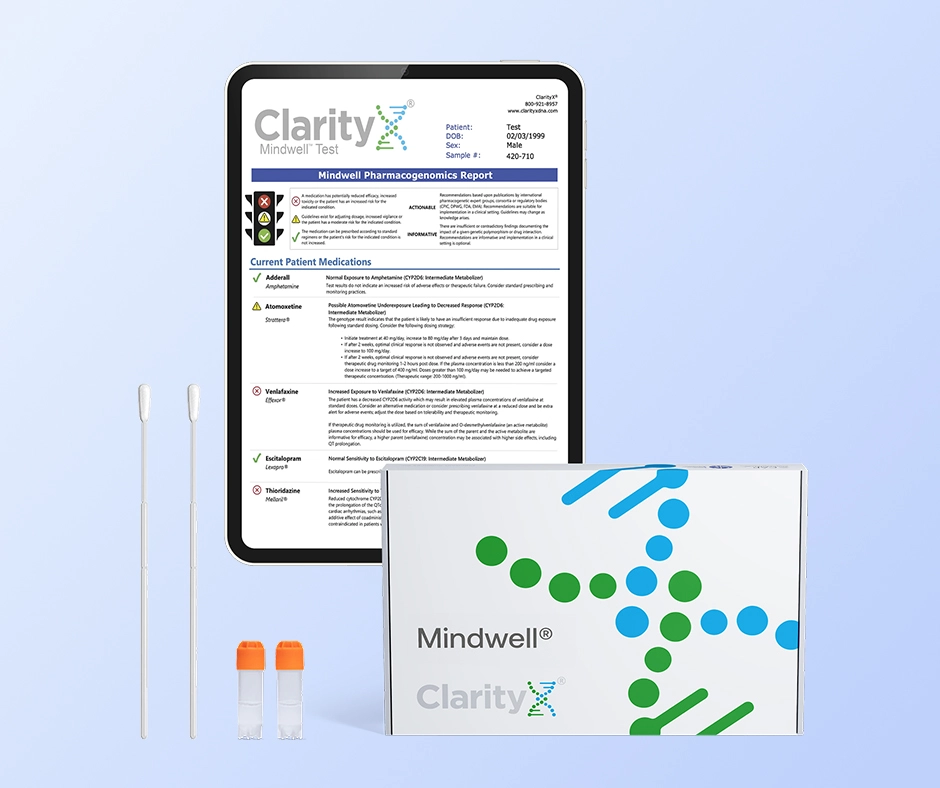Key Highlights
- Topamax® (topiramate) is a medication primarily used to prevent migraine headaches and treat epilepsy. Occasionally, it is prescribed for other mental health conditions.
- It may take a few weeks or even months to see the full effects of Topamax.
- Factors such as metabolism, age, dosage, and the condition being managed can influence how quickly Topamax takes effect.
- It’s helpful to talk openly with your healthcare providers to help ensure your treatment remains safe and effective.
Introduction
Topamax® is commonly prescribed by healthcare providers to aid in the treatment of epilepsy and to prevent migraines. This medication requires time to demonstrate its true benefits, and the duration for these effects to appear can differ from person to person, as well as depending on the condition being treated. Your healthcare provider will determine the appropriate dosage and monitor your progress to ensure it functions effectively for you.
Understanding Topamax: Purpose and Uses
Topamax® is an important treatment option for many conditions that affect neurology and mental health. Let’s explore the medication in some more detail.
What is Topamax?
Topamax (topiramate) is a medication used to treat epilepsy and migraine headaches. It belongs to a class of drugs that influence nerve function in the brain. Doctors primarily prescribe it to help manage seizures in individuals with partial-onset or generalized tonic-clonic seizures caused by sudden electrical disruptions. However, it can also be used for other purposes.
Common Uses of Topamax in Medical Treatment
Topamax is more than just a treatment for epilepsy; it is often prescribed for those who suffer from migraine headaches. It works on specific nerve pathways in the brain, which helps reduce both the frequency and severity of headaches. For many, it serves as a valuable option for managing migraine pain before it begins.
Topamax may also offer benefits for individuals managing mental health conditions, such as bipolar disorder. Although it is not the primary medication for this condition, some studies suggest it could assist with mood swings. This indicates that Topamax might be valuable in more treatment plans, and further research is necessary.
The potential uses of Topamax are still under investigation. Healthcare providers assess each individual’s needs and evaluate the benefits relative to the risks before prescribing this medication. This ensures it aligns effectively with overall treatment plans.
How Topamax Affects the Body
Topamax impacts the body in various ways to deliver its healing benefits. The precise mechanism by which Topamax interacts with the nervous system is complex and not completely understood. Nevertheless, studies highlight several significant actions within the brain's intricate network of nerve cells.
Mechanism of Action: How Topamax Works
Topamax is an anticonvulsant drug. Research indicates that Topamax influences neurotransmitters like GABA and glutamate. It enhances GABA's calming effects and diminishes glutamate's excitatory activity. This equilibrium among these neurotransmitters is crucial.
This balancing act appears crucial for Topamax's effectiveness in treating epilepsy and migraine headaches. By restoring the normal balance of nerve activity, Topamax helps reduce the frequency and intensity of seizures in individuals with epilepsy. It also works to prevent migraine attacks before they start.
Absorption and Metabolism of Topamax
When you take Topamax, it undergoes several steps in your body to provide its benefits. First, the medication is absorbed in your digestive system and enters your bloodstream. Then, it travels to target sites where it is active and passes through your liver for metabolism.
Topamax is broken down by liver enzymes, and the speed of this process can be influenced by liver function. However, much of the medication is excreted unchanged in the urine, so kidney function is also important for maintaining safe levels.
Timeframe for Topamax's Effectiveness
Topamax often reaches a steady state in the body within about four days, but its impact on symptoms can vary depending on several factors.
Factors Influencing How Quickly Topamax Works
The journey with Topamax varies for each individual. Various factors can influence how quickly it takes effect. A key factor is your metabolism, which is the internal process that enables your body to process different substances. Your genetics, age, weight, and overall health can impact your metabolism. Consequently, each person will absorb and utilize Topamax at different rates.
The dose of Topamax prescribed by your healthcare provider significantly influences how quickly it begins to take effect. Typically, treatment starts with a lower dose, which is gradually increased to minimize side effects and identify the optimal level for treatment. This step-by-step approach is essential, but it may result in a longer wait before you experience the full benefits of the medication.
The condition being managed is likely the most important factor impacting a potential timeline to see beneficial effects. A primary goal of topiramate therapy is often the prevention of different kinds of symptoms, whether they be seizures, migraines, or mood swings. It often takes time (e.g., several weeks or even months) to gauge how well a particular dose of Topamax manages symptoms over time.
Average Time to Notice Benefits for Different Conditions
For people taking Topamax to prevent migraines, some notice fewer and less painful migraine attacks after a few weeks of treatment. However, it may take longer to experience the full benefits. Significant improvements often occur after using the medication for several months.
For individuals with epilepsy, the time required to experience a reduction in seizures can vary significantly. Some patients may notice a decrease in seizure frequency within the first few weeks, while others might take several months to effectively manage their seizures.
It's important to remember that these time frames are only averages. Each person's response to Topamax can vary. It is essential to communicate with your healthcare provider to monitor progress, discuss any concerns, and adjust your treatment plan as necessary to ensure it is effective.
Dosage Guidelines for Topamax
The recommended dosage of Topamax can vary significantly based on the specific condition being treated. Your doctor will typically start you on a lower dose and gradually increase it to minimize the risk of side effects and find the optimal therapeutic range for you. It's crucial to remember that the doses provided below are broad recommendations, and individual needs often vary. Always follow your healthcare provider's instructions and the guidelines on your prescription label.
Here's a general guideline:
It might take several weeks or even a month of treatment before you start noticing the full benefits of Topamax. Your healthcare provider will monitor your progress closely and adjust the dosage accordingly to ensure its efficacy.
Adjusting Your Dosage: What You Need to Know
You should always adjust your dose of Topamax with the assistance of your healthcare provider. Changing your dosage on your own can lead to side effects and diminish the effectiveness of the medication. It's essential to communicate openly with your healthcare provider regarding your treatment. If you have any concerns about your dosage- especially if you experience side effects or feel the medication isn’t effective- be sure to inform them.
Sometimes, life can be unpredictable, and you may miss a dose of Topamax. If this occurs, take it as soon as you remember. If it's nearly time for your next dose, simply skip the missed one and return to your regular schedule. Never take two doses at once to compensate for a missed dose, as this can increase the likelihood of side effects.
Potential Side Effects and How to Manage Them
Topamax is generally well-tolerated, but like all medications, it can cause side effects. Openly talk with your healthcare provider about any worries or strange symptoms you notice.
Common Side Effects Encountered
Common side effects of Topamax include:
- Numbness or tingling sensations
- Dizziness
- Drowsiness
- Loss of appetite
- Unintentional weight loss
- Memory impairment
- Changes in taste
Some side effects may improve as your body adjusts, but it’s important to talk to your healthcare provider if you have any long-lasting or troubling side effects. They can help you find ways to adjust your treatment.
Managing Side Effects and When to Consult a Doctor
Experiencing side effects from medication can be unsettling. However, making some simple changes to your daily routine can help ease these issues. One common side effect of topiramate is dizziness. If you experience dizziness early in therapy, be especially careful to avoid falls, particularly when moving. Ensure you get up slowly from lying or sitting down. This allows your body to adjust and can reduce dizziness. If dizziness persists for more than a few days after starting the medication or changing the dosage, it’s critical to talk with your healthcare provider.
It can also be helpful to drink plenty of water throughout the day to stay hydrated. This can lower the risk of kidney stones, a possible side effect of Topamax.
Most side effects can be managed, but some need immediate medical help. If you notice serious or lasting side effects of topiramate, like mood swings, more anxiety, or thoughts of harming yourself or others, contact your healthcare provider right away.
Interactions with Other Medications
Medications can influence one another, making it essential to understand these interactions for safety and optimal results. It's crucial to consider potential drug interactions when using Topamax. These interactions may occur with various types of medications, including prescription drugs, over-the-counter medications, and herbal supplements.
Always inform your healthcare provider about all medications, vitamins, and supplements you are taking before starting Topamax. This information helps them identify potential interactions and make the best choices for your healthcare and treatment.
Common Drug Interactions with Topamax
Topamax can interact with various medications. It’s important to be transparent with your healthcare provider about the medications you are taking. A significant interaction occurs with valproic acid, another anticonvulsant drug. When these two are taken together, they can increase the blood levels of both medications, potentially leading to a higher risk of side effects.
Another important interaction to consider is with carbamazepine. This medication is commonly used to treat epilepsy and bipolar disorder. Using carbamazepine and Topamax simultaneously may diminish the effectiveness of both drugs, potentially reducing their benefits.
Topamax may also interact with certain antidepressants, which can heighten the risk of side effects such as drowsiness, dizziness, and difficulty concentrating. Your healthcare provider might adjust the dosages or recommend alternative medications to effectively manage these interactions.
Precautions for Combining Topamax with Other Medications
If your healthcare provider prescribes a different medication while you are taking Topamax, inform them about your current Topamax treatment. This includes sharing the dosage you are using, how long you have been using it, and any side effects you may have experienced.
Additionally, when you receive a new prescription or purchase over-the-counter medications, inform your pharmacist that you are taking Topamax. Your pharmacist can provide valuable advice on potential interactions and recommend the best options if necessary.
Talking openly helps ensure your safety and allows Topamax to work properly with other medications. By informing your healthcare provider and pharmacist, you support better management of your health.
Lifestyle Considerations While Taking Topamax
It's important to avoid alcohol while taking Topamax. Alcohol can increase the sedative effects of the medication. This can lead to more drowsiness, dizziness, and trouble with coordination.
Additionally, ensure you drink enough fluids, especially water, each day. Staying hydrated may reduce the risk of developing kidney stones, a potential side effect of Topamax.
Conclusion
Topamax is a helpful treatment option for managing conditions like seizures and migraines. It reaches a steady state level in the body within about four days for most individuals, but it’s important to recognize that it may take weeks or months to gauge how well it’s working for some conditions. This is because it’s usually used to help prevent symptoms over time, and trends may take some time to emerge.
Lastly when considering treatment options like Topamax your genetics can also play a vital role in determining which medications will be best suited for you. A simple test can help reduce the trial and error process associated with finding the right medication. Find out more by visiting www.clarityxdna.com
Frequently Asked Questions
How long does it take for Topamax to start working for migraines?
Many people begin to feel better with their migraine symptoms within a few weeks of treatment for migraine prevention. However, it may take longer to assess the full effects of the medication. It is important to communicate regularly with your healthcare provider about how well it is working.
Can Topamax be used for weight loss, and how effective is it?
Some clinical studies indicate that Topamax may assist with weight loss. However, it is not FDA-approved for this purpose when used by itself. In some instances, it may be recommended in combination with other medications like phentermine. Evaluating the potential risks and benefits of weight loss therapy is critical.
Are there any long-term effects of using Topamax?
Topiramate has been associated with several effects that may not occur until someone has taken the medication for some time. These include changes in vision, reduced sweating (contributing to difficulty regulating body temperature), and decreased bone mineral density. Following up with your healthcare providers to monitor your status and discuss any concerns is important.
What should I do if I miss a dose of Topamax?
If you forget to take a dose of Topamax, do so as soon as possible. If your next dose is approaching, skip the missed dose and return to your regular schedule. If you have any concerns or need to adjust your dosage, reach out to your healthcare provider.
References
https://dailymed.nlm.nih.gov/dailymed/drugInfo.cfm?setid=ca4ec248-285d-4066-8f89-5ed0c538c4c9
https://jamanetwork.com/journals/jamaneurology/fullarticle/785602
https://pmc.ncbi.nlm.nih.gov/articles/PMC1088011/
https://www.ncbi.nlm.nih.gov/books/NBK554530/
https://pmc.ncbi.nlm.nih.gov/articles/PMC10472391/
https://clarityxdna.com/blog/genetic-testing-for-medication-efficacy/





